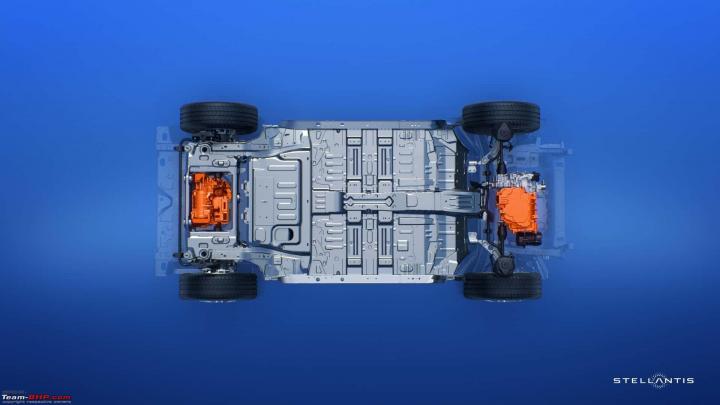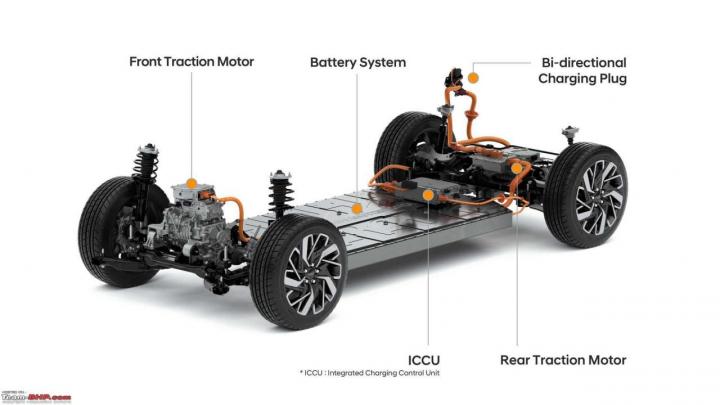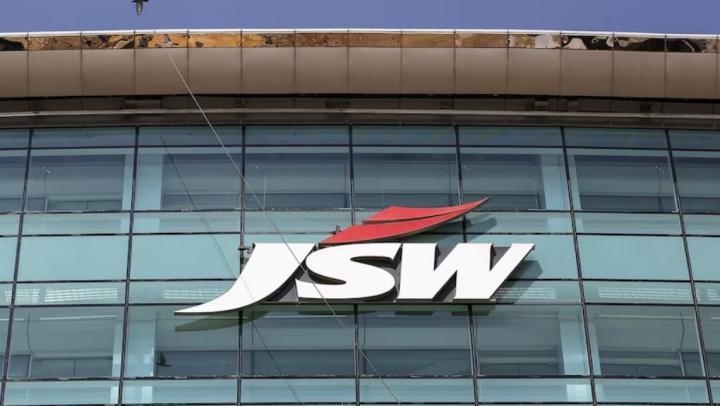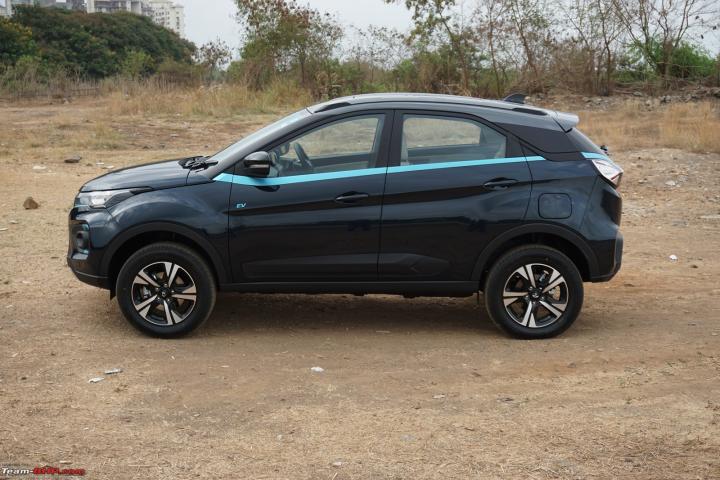News
Losing useable battery capacity on my Tiago EV: Battery degradation?
Car is behaving fine as long as charge levels are high.
BHPian adisag recently shared this with other enthusiasts:
My Tiago EV (done 35,000 km in two years) has developed a strange issue that I suspect maybe extreme battery degradation.
I have over the past month or so being noticing the range drops extremely fast once the SOC shows as 40% or less (Like an 5% to 6% drop per km) consumption shows as 120-130 wh/km. Since I generally maintain a full battery, and rarely drop below 50% charge this has not bothered me (and possibly was not noticed by me earlier).
Sunday morning I decided to test the range at the low end, started with 46% charge, did about 11-12 km on the highway at speeds of 70-80 and the range dropped to 38% and the restricted performance icon chimed on (Drop of 8% for 12km in sports mode at highway speeds - I consider this normal given the way I was driving). I was not expecting this chime so soon.
Stopped and restarted the car, started as normal without the turtle icon. Drove slower this time and turned the car around. Drove at 40-50 for 3.5km charge dropping rapidly. Car hit 25% SOC and the turtle icon came on again (38%-25% gave me only 3.5 km of range even at slower speeds).
Drove/coasted for 1 km in turtle mode before stopping and restarting the car. Again the turtle icon vanished. SOC at 23%. I was in mild panic as home was still 8.5 km away, the next familiar charger was about 5 km out.
Driving as gently as I could (20kmph) drove towards the nearest charger, turtle mode kicked in at some point, but i kept driving slowly with the charger 1 km away the SOC was at 2%. Hit Zero about 400 m from the charger and immediately lost power and the steering went heavy. Coasted for 300m and had to get out and push the last 100 meters and get the car in position. The HV Error came on only when the SOC was at zero.
Discharge Profile from 38%:
- 38% to 25% = 3.5km
- 25% to 0% = 5.1 km
Once connected to the charger, I observed the SOC rising much more rapidly than I expected. in less than 10 min I was at 41% - I checked the KW consumed - only 3.7KW.
Let the car charge to 80% total 13.4 KW used. Drove home happily no errors did some short trips dropped charge to 50% and then put on an overnight slow charge.
Car is behaving fine as long as charge levels are high. Will need to get the Service Centre to check this behaviour and update.
My Analysis: 38% gave 8.6km range and also took only ~ 2KW to charge back to 38%. 2kW =8%, so about 30% of the battery capacity is effectively unusable!!
That sounds extremely high and is disturbing. Will be getting it checked by the Service Centre and will update.
Read BHPian comments for more insights and information.
News
Hyundai & Kia to develop LFP batteries to bring down EV costs
The 4-year project will also be supported by Korea's Ministry of Trade, Industry & Energy
According to media reports, South Korean carmakers Hyundai & Kia are teaming up to reduce the cost of their future EVs via new battery tech. The two carmakers have launched a new project to develop lithium-iron-phosphate (LFP) battery cathode materials for future EVs.
Hyundai & Kia have also partnered with Hyundai Steel & EcoPro BM - South Korea's leading battery material makers, to develop the precursor for LFP battery material production. The reported 4-year project will also be supported by Korea's Ministry of Trade, Industry & Energy under its LFP Battery Technology Development Plan.
SoonJoon Jung, Head of Hyundai & Kia's electrification & driving materials, stated, "To meet future demand in the EV market, rapid technological development and effective battery supply chain establishment are essential."
The new project will also help reduce reliance on imports and create a stable supply chain during the industry's shift to electric. The new LFP batteries being developed by Hyundai & Kia are said to use advanced processes. Hyundai claims the new method will boost production while driving down costs compared to the current processes.
As per reports, Hyundai Steel will develop "high-purity iron powder" using domestically recycled iron, which will then be used by EcoPro BM to develop the LFP cathode material.
Hyundai & Kia recently introduced affordable EVs in the global market this year, with the Casper EV and EV3, respectively.
Source: Electrek
News
Ferrari EV & hybrids could get $7,500 annual battery subscription
Ferrari's hybrid models are already outselling its conventional internal combustion vehicles.
According to media reports, Ferrari plans to introduce an annual battery subscription service for its hybrid and future all-electric vehicles. The $7,500 annual subscription service is intended to ease customer concerns of battery degradation, while also helping the vehicles maintain their resale value.
The extended battery warranty service allows owners to replace their battery after 8 years, as long as there has been no earlier swap. They would also be automatically entitled to a second battery swap on the car's 16th year of ownership. Ferrari CEO, Benedetto Vigna states that along with peace of mind for its owners, the subscription service also brings in a steady stream of revenue for the brand.
As per reports, Ferrari's hybrid models are already outselling its conventional internal combustion vehicles. It also stated that between July & September last year, the hybrid models accounted for 51% of the brand's sales.
Ferrari is also developing its first EV, scheduled to make its global debut sometime by late 2025.
Source: Bloomberg
News
CATL's new EV battery can add 600 km range in 10 minutes
It is capable of superfast charging even in extremely low temperatures of up to -20 degrees Celsius.
According to media reports, China's CATL has unveiled what it claims to be the world's first EV battery with 4C ultra-fast charging capability. CATL claims that its new EV battery, called Shenxing Plus, can add 370 miles (600 km) of range with just 10 minutes of charging. Also, on a full charge, the new battery claims to offer over 620 miles (1000 km) as per the CLTC cycle.
The new CATL Shenxing Plus battery is said to be the world's first to get 4C ultra-fast charging capabilities. In addition to this, the new battery is also capable of superfast charging even in extremely low temperatures of up to -20 degrees Celsius.
The Shenxing Plus battery has an energy density of 205 Wh/kg which it achieves by using an in-house developed 3D honeycomb material.
CATL is also said to be working on reducing the cost of LFP batteries per kWh by as much as 50% by mid-2024. CATL is the world leader when it comes to EV batteries. The company has dominated the industry for seven straight years. In 2023, CATL's market share reached 36.8% - almost 21% more than its closest rival, BYD.
Source: Electrek
- Tags:
- Indian
- ev battery
- CATL
- International
News
Need to reduce EV battery weight by half, says Stellantis CEO
Tavares also mentioned how he doesn't think hydrogen is a viable alternate tech for mass mobility.
According to media reports, Carlos Tavares, CEO of Stellantis, stated that the automotive industry will have to look at reducing the weight of EV batteries by 50% in the next 10 years time.
He mentioned how, with today's technology, making an EV with a "decent range" of around 400 km required 500 kg of additional raw materials compared to a traditional car. "From an environmental standpoint... I don't think it makes sense," he said.
He stressed how the automotive industry needed to achieve a "breakthrough" in terms of the power density of EV battery cells. Tavares said, "I think that's on the way. I think over the next decade we'll be able to reduce the battery pack weight by 50%, hence reducing by 50% the use of additional raw materials against a conventional vehicle."
In addition to this, Tavares also mentioned how he doesn't think hydrogen is a viable alternate tech for mass mobility. "I'm afraid that for the time being affordability is going to be a major showstopper for hydrogen. For the near future, it's (possibly) going to be a solution for fleets of big corporations, but certainly not for normal citizens," he said.
Source: Reuters
News
Multiple issues on my Tata Tiago EV make me regret my buying decision
I am lucky to have another vehicle with me, but for someone who only owns this vehicle would have faced so many issues.
BHPian rt363 recently shared this with other enthusiasts
A close friend of mine based out of Calicut, Kerala had to /is facing multiple issues with his new Tata Tiago EV. Despite low running per year, he chose the Tiago EV due to the convenience of driving an electric car, lower running costs and better value derived from the car in the long run!
Unfortunately, the mental stress and agony that he had to go through because of the faulty battery in the car wipes out all the pros that you attach to an EV and the TATAs. Since he is not a T BHP member, posting his narrative here on his behalf.
"Team BHPians,
This is going to be a long and detailed write up is about my purchase and 3 months experience of using TATA Tiago EV XT LR Variant.
Why Tata Tiago EV?
Tiago EV was a replacement for my daily driven Hyundai Grand i10 Automatic which we had used for 7 years but had covered only 36,000km as the car was mainly used for our commute from home to work which was just 3.5km away (one way) and usual city runs for errands and other short drives. I also own a BMW 3 series G20 2020 model and I am awaiting my Toyota Innova Hycross which was booked a few months back.
The reason for changing my Hyundai Grand i10 was low fuel economy of the vehicle along with the soaring prices of fuel and also my family and I felt like it was time for a change.
When my family and I started thinking of a new car, we knew that EV was the right option as it will be just for city usage and we had also driven a couple of other EV vehicles owned by my friends and we loved the experience and with the current price of petrol, we thought EV is a great option.
How we landed at Tata Tiago EV:
We were considering vehicles like Citroen and Mahindra whereas Tata was NOT something we were thinking about initially until I travelled in my friends Tata Altroz and I was really pleasantly surprised with the ride comfort and material quality. If they had an EV option for Altroz, we would have definitely purchased that.
I did some online research on Tata Tiago EV and found out that it was a very practical car for city usage even though some people faced battery High Voltage Alert issues which was also something faced by a TeamBHP member and some other minor issues which I thought back then could happen to any other EV in the market.
Despite these reviews, the very next day, I visited Marina Motors in Calicut to check out the Tiago EV. I was pleased with the spaciousness and the features it offered. The sales executive informed me that the vehicle could be delivered in about a month. After a test drive, I was convinced, and I booked the Medium Range version in Midnight Plum colour, offering a 250 km range, over the Long Range option with a 315 km range, as we believed the medium range was perfect for our needs.
]After a month of waiting, the car was not delivered and they said it might take longer for the vehicle to arrive due to some issues and I was getting impatient, so I went to Rotana Motors in Calicut to check if they had a car available for immediate delivery.
In the mean time, my family and I decided to book the long range vehicle with 315km range and I asked the sales executive if they have a vehicle that can be delivered immediately and he said that they can deliver the vehicle which is in transit within 7-10 days and after confirming the same, I paid the booking amount and asked them to let me know when the vehicle arrives so that I could check the condition of the vehicle.
As promised by the sales executive, the vehicle arrived on time and I checked the VIN number and the condition of the vehicle and I made the remaining payment and the vehicle was delivered in 3 days time. All in all, it was a very good experience from Rotana Motors.. so far!
Delivery Experience:
On 27th July 2023, the day of delivery, I informed the sales executive about the delivery time and he agreed and my brother and I arrived at the showroom on time but the sales executive had gone out for a test drive and arrived an hour late and even after he got back in the showroom it took over 45 minutes to finally get the vehicle keys officially in my hand.
The entire process took 2 hours+ and it was very tiring.
As a very new EV owner, I expected the sales executive to explain things like how to get maximum range, cars various functions and how the app Zconnect works, etc.
But all he explained to me was how to turn on the vehicle (which was by turning the keys obviously) and how regenerative braking works and I thought that is all there is to it and drove off happily.

Driving Experience and Suspicions about the range:
Even though the company claims 315km range for the vehicle, I was always expecting a realistic range of 240-260km at least. But a week into using the vehicle daily, I was surprised to see that the vehicle was reaching 20% charge from 100% with less than 120km reading driven in the ODO meter and I informed the sales executive about this and he said that it will take 3-4 full charge from the charger installed at home to get the actual range of the vehicle which seemed weird but I thought I would try that out.
Even when the vehicle was charged up to 99% the range showed only 150-160km range which is less than half of what the company is claiming.
This was my first suspicion about the battery issue and wanted to get it checked. As I was busy with work, I requested the sales executive to arrange a pick up for the vehicle and he told me he would personally come and pick up the vehicle and get the issue checked but long story short, even after two weeks of contacting him DAILY, he never came to pick up nor did he arrange a pick up by anyone else. He promised every day that he would come to pick up the vehicle.
I even contacted the showroom directly and they said another executive would call me back asap but I never got a call back form anyone from Rotana Motors Main Showroom/Service. This was clearly very unprofessional from the dealers side! Once they are done with the sales, no support/ responsibility w.r.t to car/ customer. They have ensured that I will never walk back to the showroom if i get a TATA, in future.
On August 10th 2023, I emailed Tata motors to their customer care email id regarding this range issue and about the executives irresponsibility and they immediately got back to me. Even the sales executive (who did not care a bit earlier) called me up to ask if I had filed a complaint. I had slight hopes that things would be taken seriously from now but even after escalation he never came to pick up the vehicle, despite his promises.
On 18-August-2023, the car ran 123.6km with only 17% charge remaining and on 23-August-2023 the vehicle ran only 118km with 18% charge remaining.
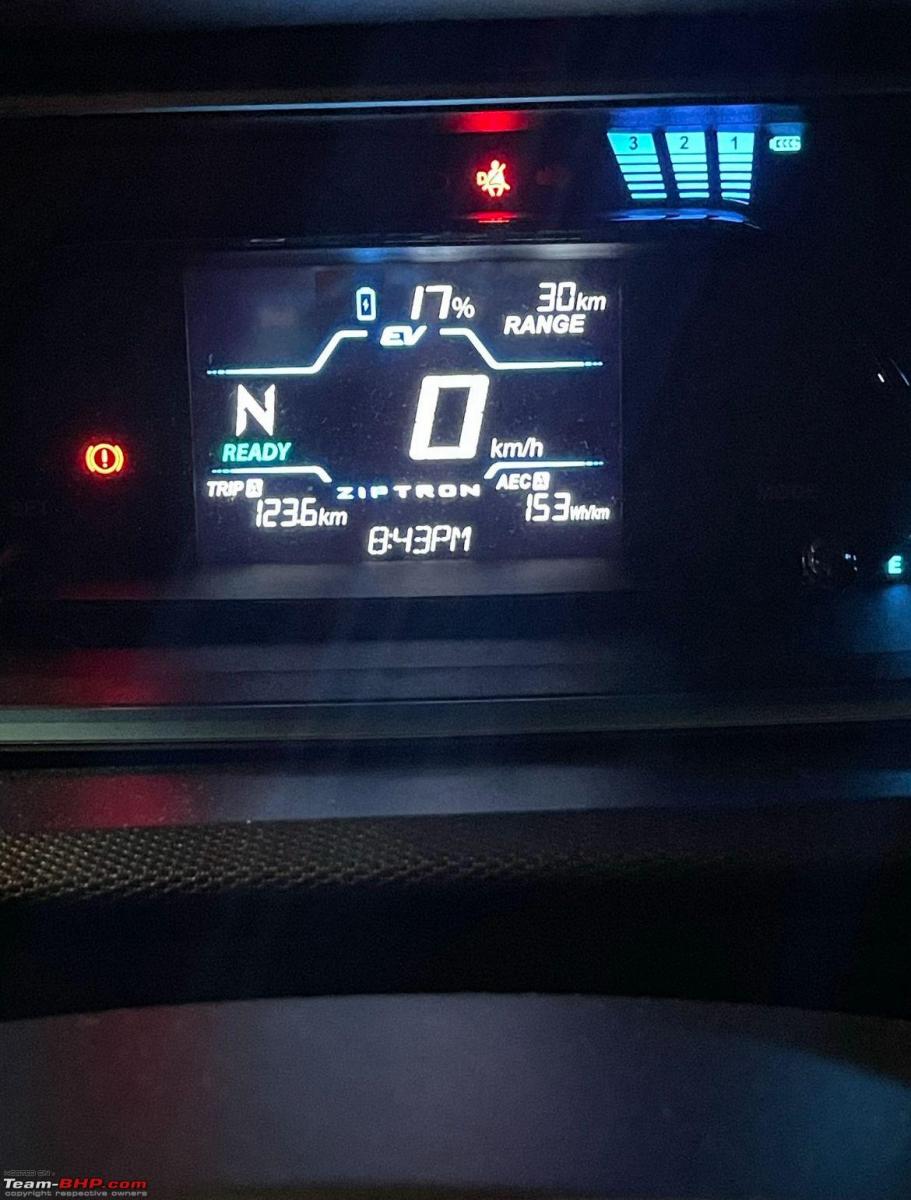
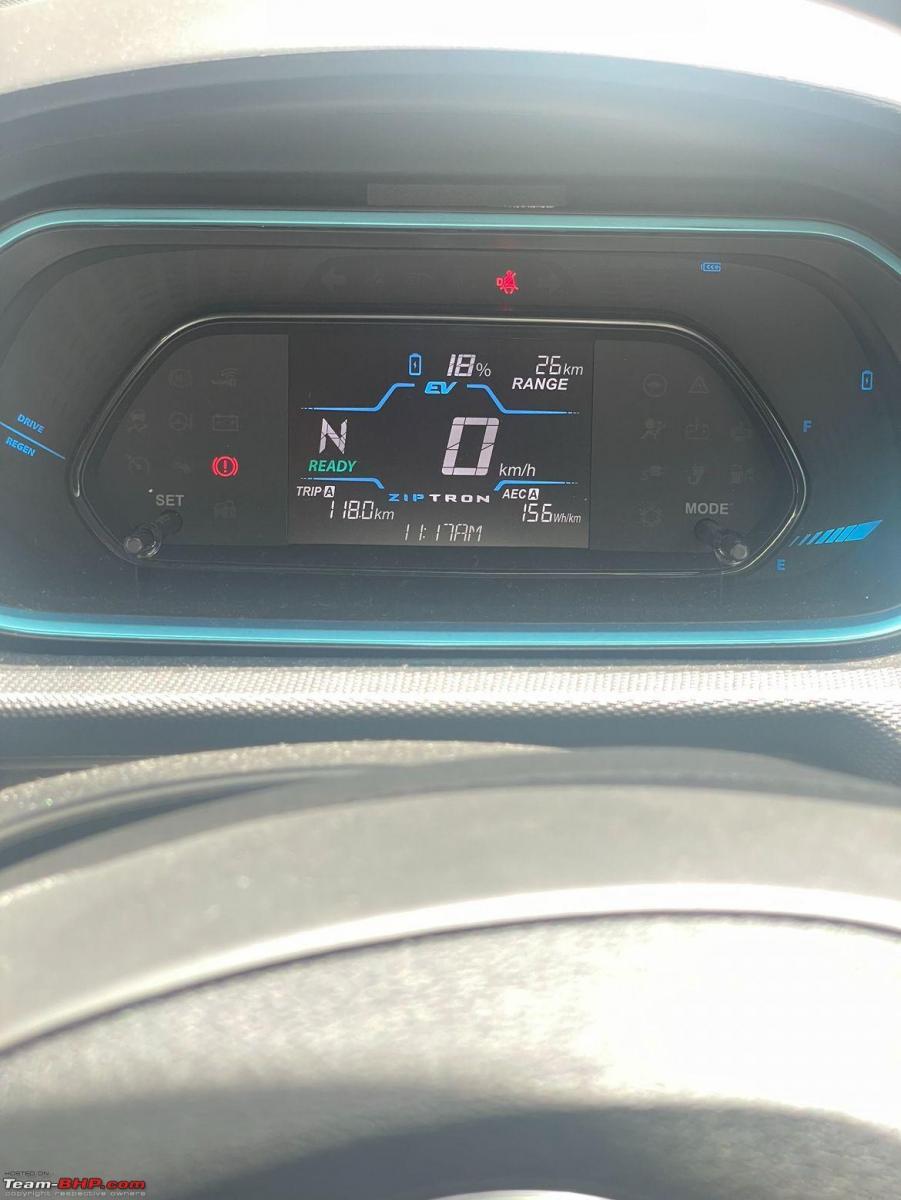
I had only heard about any car dealers services being terrible and this was my first time experiencing something like this ever and I had given up on the vehicle by now and felt completely helpless.
As I am a businessman based in Calicut, I did not have the time to go to the showroom directly and argue with the executive but with all the cars I have ever owned, this sales executive is the most irresponsible person I have ever met and did not care the least bit about his customers after delivery.
It Continues:
After another email to Tata Motors, I was finally contacted by another executive from Rotana Motors, Meenchanda showroom, which is an exclusive showroom for EVs, regarding the range issue and I was asked by the new executive to bring my “AEC” (charge consumption value) to below 100Wh/km by low acceleration, etc and at that time, the AEC value was somewhere between 140-155Wh/km.
This should have been explained to me by the first sales executive on the day of delivery but you all know by now how that went.
First Major Issue with Battery:
Over the next couple of weeks, I tried to bring down the AEC to below 110Wh/km but that was very difficult for me since the lowest I got it down to was 135Wh/km.
This went on for the next couple of weeks until 16-Sept-2023 where I was driving to the neighboring town which was 30km away. I started from my house with 68% battery remaining but after reaching a certain point, the vehicles total “range remaining” went down to 21km and soon showed “recharge” even when the percentage was showing 60% and the car had run a total of 74km including the trip we were on.

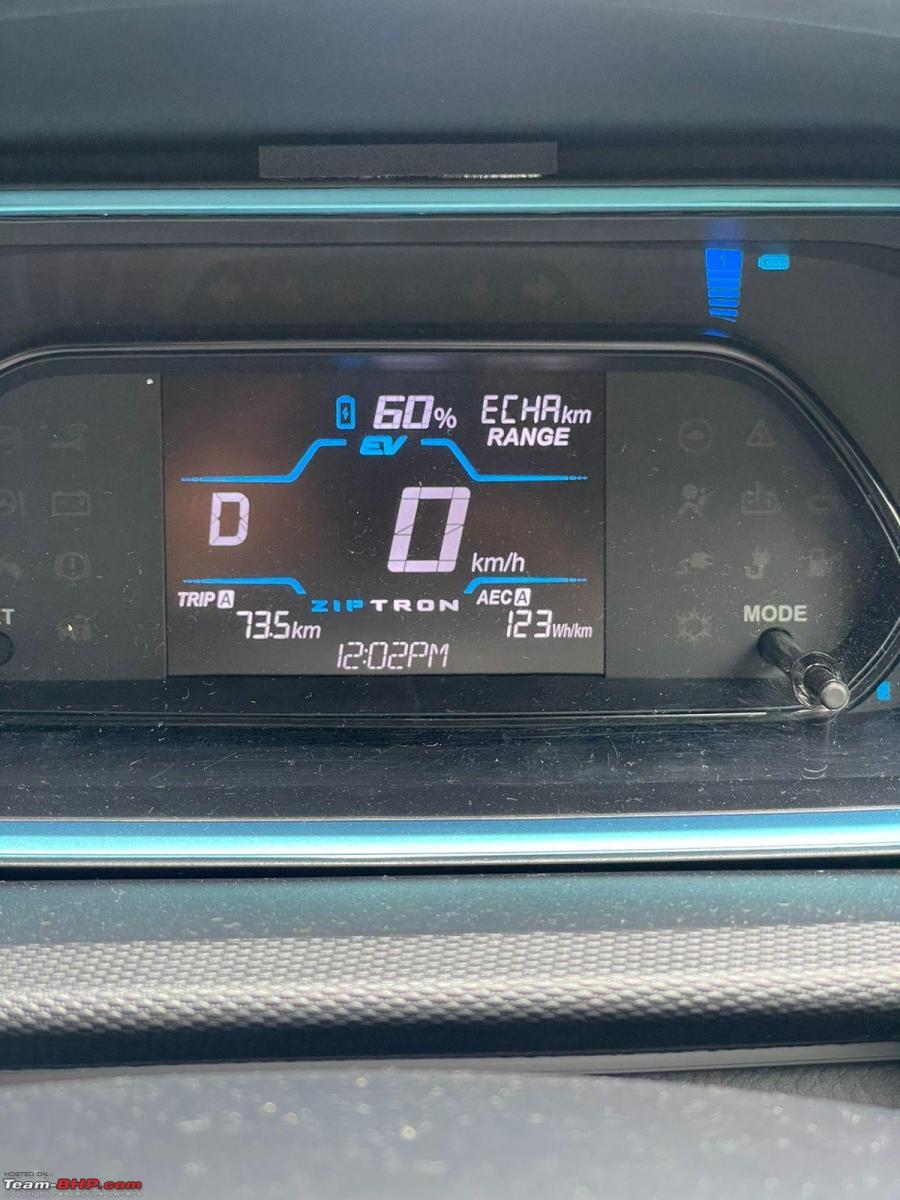
I reported this issue to the new executive who asked me if I could bring the vehicle to their service centre and I gave the car to get it checked myself after work. During this 30km+ drive from that town to the service centre, I noticed that the “range” which was supposed to go down from the then 21km was increasing and by the time I reached the service centre, the Range increased from 21km/recharge to 70km. Basically the entire range system was reversed.
Luckily the new executive was very helpful and checked the vehicle where it showed that there was nothing wrong with the vehicle and asked me to try to charge the vehicle to 100% and then if the issue still remains unsolved, he said he’d get the first service done as the vehicle was nearing 1000km mark and I thought hopefully that will solve the issue.
But the best part was that the new executive took me on a drive and showed me how to drive maintaining “AEC number” of the vehicle by reducing constant acceleration and braking and even using the regenerative braking correctly.
From that day, I drove the vehicle exactly like how the executive had demonstrated and I even managed to bring the “AEC value” to less than 110Wh/km and I was getting a range of 180km with 20% charge remaining where at 100% the vehicle even showed a range of 240km.
Limp Mode Issue:
I was conscious about my acceleration and braking after that and I wanted to check the full range of the vehicle since I had done that with one of my friends MG EV where we drove it down to 3% before we charged it.
I left for work with 20% charge and when the car hit 17% with 39km range, limp mode got activated and the AC got cut off and the cars power was reduced and the constant ringing noise was definitely a pain.
I was shocked when limp mode got activated at 17% because I had read somewhere that it usually only happens below or close to 10%.
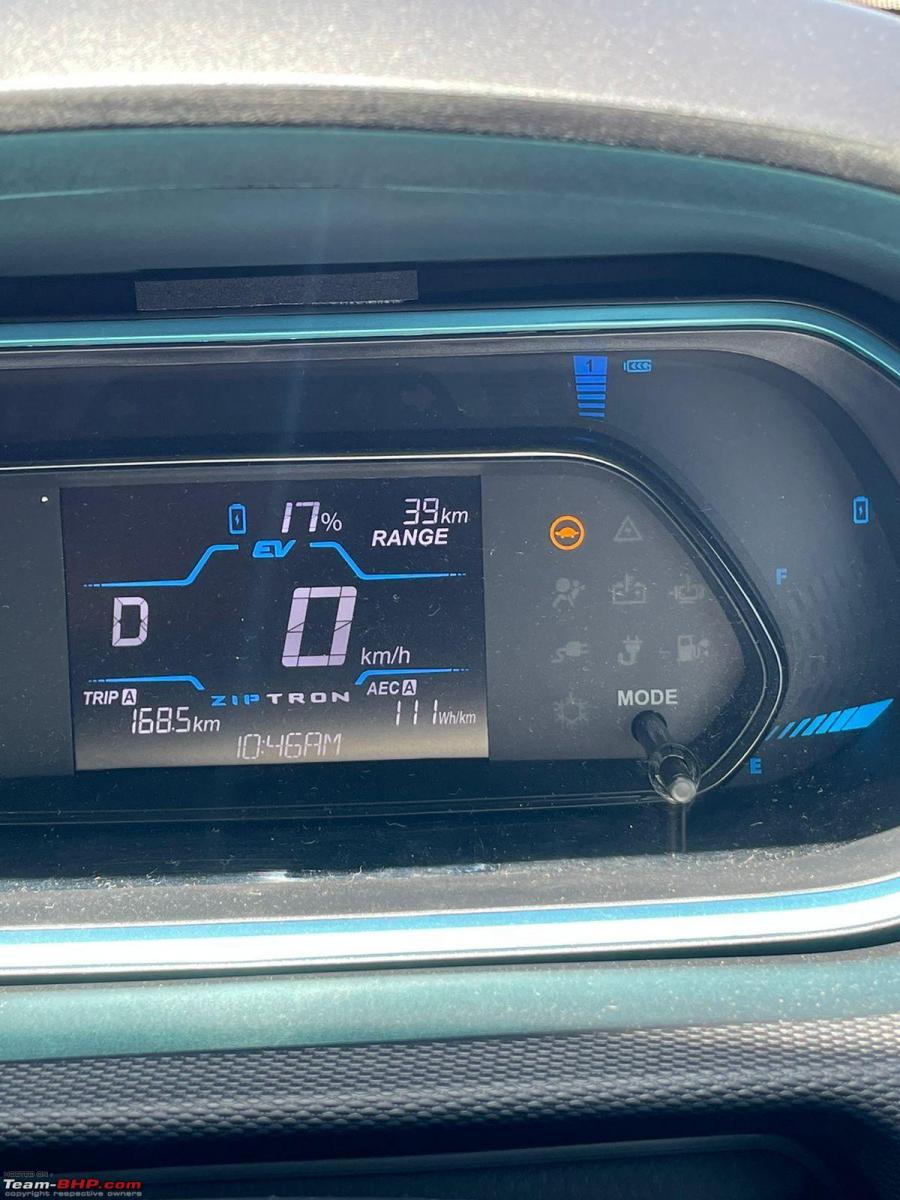
I booked for another appointment at the new service centre and they came and picked the vehicle unlike the first place and the executive called me up to say that no issue was being shown on the system and I was given the car back on the same day after more checkups. This is when I was convinced that the car had battery issues even though nothing was being shown on their computer.
Over the next couple of trips after 100% charge, limp mode got activated at 20% and this time the car was not getting charged when connected to the cable and just kept making the ringing sound from the dash. So I let the car cool down for a while and tried connecting the charger again after 30 mins and it started charging.
After completing that 100% cycle, limp mode got activated at 26% with 53km range on 17-Oct-2023. Imagine on a 180km realistic range car, the limp mode getting activated upon crossing 150kms?
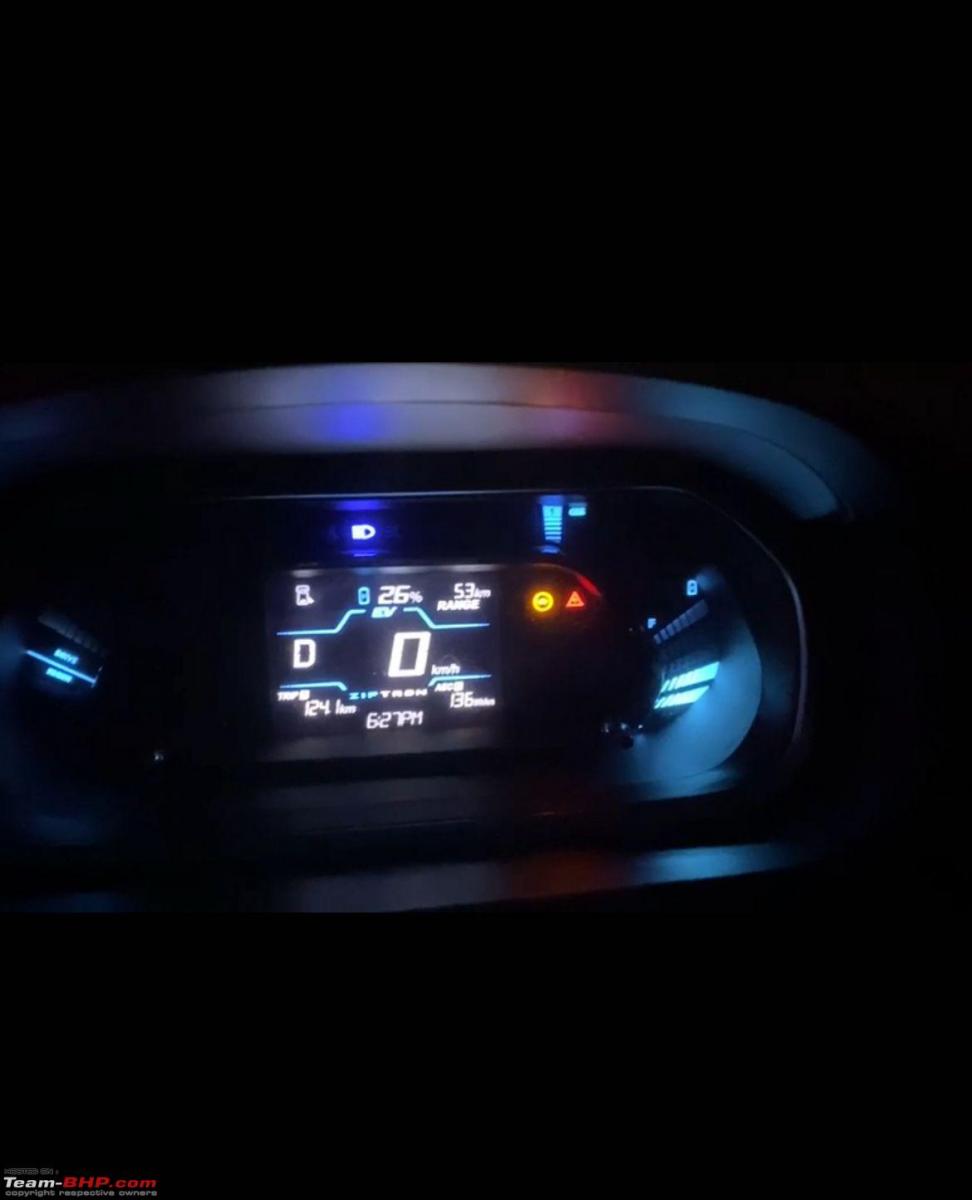
And then at 28% on 21-Oct–2023.
I just sent the video to the executive and did not bother explaining things anymore because I was already regretting buying this car. Basically, I had given up and did not know what to do. But I made sure all this was being reported to Tata motors, so I sent emails constantly regarding every single issue I have been facing then and when it happens.
Car break down and HV Alert:
On 22-Oct-2023, what I had feared officially happened.
My family had taken the car to church and the car did not turn on later. It just showed “HV Critical Alert” at 25%.

I called up breakdown service via Tata Motors customer care number and I must say that they were very professional and arrived on time. I had even called up the executive and he said he will look in to it 24-Oct-2023 as the showroom was shut on the occasion of Dussera.
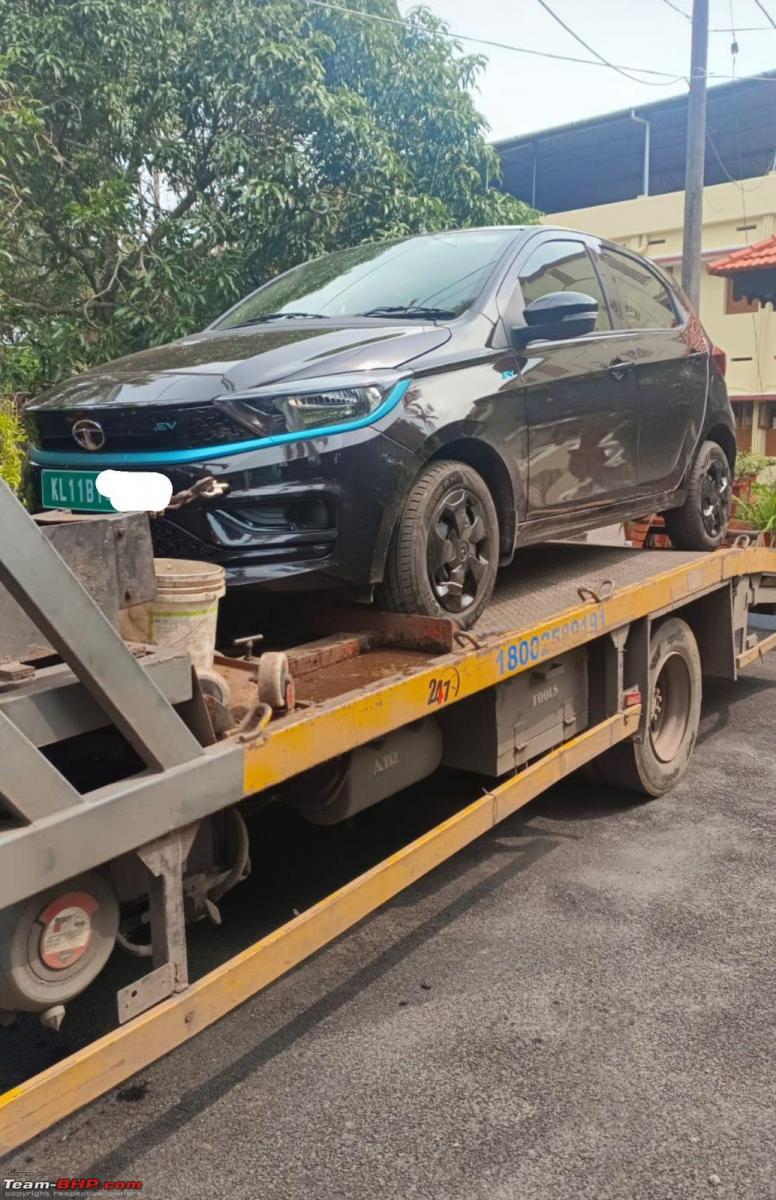
Battery Replacement and Temporary Car:
I was contacted by the executive on 24-Oct-2023 and he told me that the vehicle had battery complaints and would be fully replaced under warranty and I was later on contacted by the Service Manager and informed that it would take 15-20 days for the vehicle to be fixed since the battery has to arrive from their plant in Gujarat and I asked for a temporary vehicle during this period and he said that they do not have any vehicles readily available.
I am lucky to have another vehicle with me, but for someone who only owns this vehicle would have faced so many issues. But I told him that it is not possible and that they had to arrange a vehicle for me since we are a family of 4 and we all needed vehicles for work and personal purposes all the time, so he said I could rent a vehicle with Rs. 1000 as the per day budget where we would have the pay for the fuel and that made no sense to me.
After calling him every day, he said another vehicle that was given to another customer during his “Battery Change” period is back in the showroom. But the vehicle met with an accident while it was with the customer and it can be given only after fixing it.
As I write this on 02-Nov-2023, I am yet to get any updates regarding the temporary vehicle and it has been 11 days since my car broke down.
Conclusion:
My three month experience with the Tata Tiago EV has been far from satisfactory. What initially seemed like a promising solution for city driving turned into a nightmare of issues and disappointments.
From the very beginning, the sales executive’s very poor and irresponsible post-delivery support left me extremely unsatisfied. My optimism about the claimed 315 km range evaporated as the vehicle consistently fell short, with the real-world range proving to be just a fraction of what was promised.
I still think that if the car had worked properly, it would be the perfect option for city users like myself. But that was not the case obviously. I made a total of 6 visits to the service centre in 2 months (some registered visits and some unregistered).
I tried to save fuel money by buying an EV but I ended up stressing and losing my time instead.
I even called up the first sales executive to know if he can arrange a temporary vehicle for me, to which he said he will ask and get back to me and as you can guess, he has not contacted me till date. He should learn from other brands executives on how to treat a customer.
Being a family of 4 with members working in different fields, our daily commute itself has become really difficult. One of my relatives was considering buying a Tata Tiago EV or Nexon EV but I strongly recommended against buying any EV from Tata based on my personal experience and they have put the purchase on hold.
To conclude in simple words:
Do I regret buying this car?
YES.
Would I recommend this car to someone else based on my personal experience?
NO.
Was the switch from petrol to EV worth it, based on my 3 months experience,
NO, definitely not worth the hassle and stress.
My intention in sharing this review is to provide an honest account of my experience with the Tata Tiago EV, with the hope that it can serve as a cautionary tale for those considering this vehicle. Despite its promising size for city use and an okay range, the litany of issues I've faced makes it clear that this is not a vehicle I would recommend to anyone.
In my view, Tata Motors has a long way to go in addressing the reliability and quality concerns in their electric offerings. I would advise potential buyers to thoroughly research and consider alternatives, as my journey with the Tata Tiago EV has been nothing short of a disappointing and frustrating ordeal. Cheers! "
Although TATA looks like catering to the needs of customers, a huge void is to be filled in respect of after sales experience and training for staff. Hope TATA does something about the recurring complaints from customers regarding the above.
Check out BHPian comments for more insights and information.
News
New test developed to certify battery health of used EVs
EV batteries can degrade quickly if rapidly charged too often, charging even when the battery is nearly full or leaving it plugged in for long periods.
Altelium, a UK-based startup, has come up with a test and certificate to determine the state of health of EV batteries.
The test is said to be launching this year across 7,000 EV car dealers in the USA and 5,000 dealers in the UK via service providers like Assurant & GardX. Alex Johns, Business Development Manager, Altelium, highlighted the importance of these battery health tests by stating, "If the second-hand car market doesn't work properly, the new car market doesn't work properly and the electric transition won't happen."
A battery's health is determined by multiple factors. EV batteries can degrade quickly if rapidly charged too often, charging even when the battery is nearly full or leaving it plugged in for long periods.
Aviloo, an Austrian startup, which has also developed a test for dealers & private individuals found that after 1,00,000 km, EV battery health can vary by up to 30%. It means that a customer looking for second-hand EVs with 90% of its charge when new could end up buying one with just 70% due to the bad charging habits of the previous owner. Marcus Berger, CEO of Aviloo, stated, "With an EV, mileage and age don't tell you anything. It's all about the battery."
Reports state that while carmakers provide in-vehicle EV range information, the data is often excessively rosy, which makes independent tests vital.
Source: Autoblog
- Tags:
- Indian
- ev battery
- International
News
JSW in talks with LG Energy Solution to make EV batteries in India
JSW wants to set up a factory to produce 20 GWh of battery capacity in phases by the end of this decade.
According to a media report, JSW is looking to set up an EV battery manufacturing unit in India. The company is said to be in talks with South Korea's LG Energy Solutions (LGES) to jointly manufacture batteries locally.
It has been reported that JSW had discussions with LGES in South Korea earlier this month. The company proposed a partnership to manufacture battery cells for EVs and energy storage.
Reports suggest that JSW plans to build a local supply chain for EVs. Apart from LGES, the company is also said to be in talks with other battery manufacturers, including China's CATL and Panasonic and Toshiba from Japan.
While JSW has been tight-lipped about its EV plans, some say, the company wants to set up a factory to produce 20 GWh of battery capacity in phases by the end of this decade.
JSW chairman Sajjan Jindal has also expressed his interest in manufacturing EVs in India. It is rumoured that JSW is currently in talks with China-based Leapmotor to license technology to build EVs under its own brand.
Source: ET Auto
News
Nissan builds portable power sources from recycled Leaf EV batteries
Retired EV batteries have great potential in energy storage applications.
According to reports, Nissan has developed a portable power source using the batteries from its old Leaf electric vehicle. The EV battery will be given a new lease of life as a portable power station to run gadgets on the go or deliver emergency power whenever required.
The portable power source has been developed by Nissan, in partnership with JVCKenwood Corp & 4R Energy Corp - a company co-owned by Nissan and Sumitomo Corp, which works on ecological vehicles & power storage solutions.
Reports state that Nissan officials test the batteries in Leafs after their owner stops driving them and then make use of those which are capable of holding a charge. The Nissan Leaf uses 48 battery modules, while the portable power source developed contains 2 modules. The reuse of EV batteries helps sustainability as most of them are manufactured using rare earth metals & other raw materials.
Balakumar Balasingam, an associate professor at the University of Windsor, (not involved in the Nissan project), stated that batteries with charge capacities below 80% can no longer be used to drive electric cars. However, they can still be used for other purposes. He stated, "Retired EV batteries have great potential in energy storage applications." He added, "Without such a solution, billions of EV battery packs will be made and then prematurely recycled in the next decade. That will be a problem for sustainability.
Source: Autoblog
- Tags:
- Indian
- ev battery
- International
News
My Tata Nexon EV battery fails a 2nd time: Major delay in replacement
Unfortunately, within 6 months of that incident, yet another time battery failed.
BHPian GS300 recently shared this with other enthusiasts.
A few months back, I had reported here that our Nexon EVs main battery failed, and it had to be replaced.
That time the replacement process did not take much time, it was done within one week, if I recall correctly.
Unfortunately, within 6 months of that incident, yet another time battery failed. It stopped in the middle of the highway with some 'limited performance mode' or some such error.
We took it to the dealer and after a day of diagnostics, they said the battery need to be replaced.
But this time the problem is, the car is at the service center for 4 weeks now, and it is not clear when it will be back.
I have tried all possible ways to get information in the last few weeks, but did not get any accurate information - it is always like - "The battery is sent from Tata motors, it has not reached here", or "they are changing the battery plant, hence there is some delay" or "will call back in 15mins"...etc
I went and talked to the CRM and service-in-charge etc athe SC, but there also, they just reassure that we will get the car within another "two days", and it has been a week.
Anyways, the summary is that - it appears to me that Tata Motors does not yet have the service infrastructure - supply chain, process, communication process etc - to support the volume of EVs they are selling. The reliability is also questionable.
I wonder if ours is a one-of incident, or are there many owners experiencing battery problems like this.
Here's what BHPian ferrarirules had to say on the matter:
If the car is in service center for warranty replacement, you should ask the service center for a loaner car or ask them to reimburse cab bills.
To your questions about battery issues, there was another bhpian who posted on his ownership thread for about battery replacement. The process for him was very smooth.
Here's what BHPian sarathlal had to say on the matter:
My friend is going through similar state now.
Worse part is, although its pretty evident that its due to battery issue (Since we have gone through the entire cycle once), dealer is prepared to make us go through this time consuming process again.
Check out BHPian comments for more insights and information.
Pages







